-
 Design and Flight Experiment of a Motor-Directly-Driven Flapping-Wing Micro Air Vehicle with Extension Springs
Design and Flight Experiment of a Motor-Directly-Driven Flapping-Wing Micro Air Vehicle with Extension Springs -
 Multifunctional Liposomes: Smart Nanomaterials for Enhanced Photodynamic Therapy
Multifunctional Liposomes: Smart Nanomaterials for Enhanced Photodynamic Therapy -
 Development of Variable Elastic Band with Adjustable Elasticities for Semi-Passive Exosuits
Development of Variable Elastic Band with Adjustable Elasticities for Semi-Passive Exosuits -
 Regenerative Strategies for Vocal Fold Repair Using Injectable Materials
Regenerative Strategies for Vocal Fold Repair Using Injectable Materials
Journal Description
Biomimetics
Biomimetics
is an international, peer-reviewed, open access journal on biomimicry and bionics, published monthly online by MDPI.
- Open Access— free for readers, with article processing charges (APC) paid by authors or their institutions.
- High Visibility: indexed within Scopus, SCIE (Web of Science), PubMed, PMC, Ei Compendex, CAPlus / SciFinder, and other databases.
- Journal Rank: JCR - Q1 (Engineering, Multidisciplinary) / CiteScore - Q2 (Biomedical Engineering)
- Rapid Publication: manuscripts are peer-reviewed and a first decision is provided to authors approximately 17.1 days after submission; acceptance to publication is undertaken in 2.8 days (median values for papers published in this journal in the first half of 2025).
- Recognition of Reviewers: reviewers who provide timely, thorough peer-review reports receive vouchers entitling them to a discount on the APC of their next publication in any MDPI journal, in appreciation of the work done.
Impact Factor:
3.9 (2024);
5-Year Impact Factor:
4.0 (2024)
Latest Articles
Enhancing Polydimethylsiloxane with Silver Nanoparticles for Biomedical Coatings
Biomimetics 2025, 10(12), 846; https://doi.org/10.3390/biomimetics10120846 - 17 Dec 2025
Abstract
Silver nanoparticles (AgNPs) are widely used as antibacterial agents either as colloidal solutions or deposited on surfaces. However, the high concentration of AgNPs can lead to cytotoxicity, posing a hazard to healthy cells and tissues. Achieving a balance between antibacterial efficacy and cytocompatibility
[...] Read more.
Silver nanoparticles (AgNPs) are widely used as antibacterial agents either as colloidal solutions or deposited on surfaces. However, the high concentration of AgNPs can lead to cytotoxicity, posing a hazard to healthy cells and tissues. Achieving a balance between antibacterial efficacy and cytocompatibility is crucial for biomedical applications. Polymeric coatings, especially those made from polydimethylsiloxane (PDMS) like Sylgard 184, are popular in biomedical applications due to their user-friendliness. We have developed a cost-effective method to reduce silver ions using the Si-H silane functions of PDMS in situ. Tetrahydrofuran (THF) acts as a solvent, inducing a swelling effect in PDMS, allowing silver ions from silver tetrafluoroborate (AgBF4) dissolved in THF to diffuse into the polymer and undergo reduction. This process results in PDMS functionalized with well-distributed 10 nm silver AgNPs. The resulting metal–polymer nanocomposites (MPNs) exhibit yellow shades and, based on qualitative Live/Dead staining observations, show no apparent cytotoxicity on human gingival fibroblasts. In addition, SEM analyses indicate a qualitative reduction in E. coli adhesion, suggesting an antibacterial anti-adhesive potential against this bacterial strain. Further studies should investigate the release profile of AgNPs in these composites, which could guide the development of new biocompatible coatings for phototherapy devices and enhance their long-term clinical performance.
Full article
(This article belongs to the Special Issue Functional Biomimetic Materials and Devices for Biomedical Applications: 5th Edition)
►
Show Figures
Open AccessReview
Artificial Intelligence in Organoid-Based Disease Modeling: A New Frontier in Precision Medicine
by
Omar Balkhair and Halima Albalushi
Biomimetics 2025, 10(12), 845; https://doi.org/10.3390/biomimetics10120845 - 17 Dec 2025
Abstract
Organoids are self-organizing three-dimensional (3D) cellular structures derived from stem cells. They can mimic the anatomical and functional properties of real organs. They have transformed in vitro disease modeling by closely replicating the structural and functional characteristics of human tissues. The complexity and
[...] Read more.
Organoids are self-organizing three-dimensional (3D) cellular structures derived from stem cells. They can mimic the anatomical and functional properties of real organs. They have transformed in vitro disease modeling by closely replicating the structural and functional characteristics of human tissues. The complexity and variability of organoid-derived data pose significant challenges for analysis and clinical translation. Artificial Intelligence (AI) has emerged as a crucial enabler, offering scalable and high-throughput tools for interpreting imaging data, integrating multi-omics profiles, and guiding experimental workflows. This review aims to discuss how AI is reshaping organoid-based research by enhancing morphological image analysis, enabling dynamic modeling of organoid development, and facilitating the integration of genomics, transcriptomics, and proteomics for disease classification. Moreover, AI is increasingly used to support drug screening and personalize therapeutic strategies by analyzing patient-derived organoids. The integration of AI with organoid-on-chip systems further allows for real-time feedback and physiologically relevant modeling. Drawing on peer-reviewed literature from the past decade, Furthermore, CNNs have been used to analyze colonoscopy and histopathological images in colorectal cancer with over 95% diagnostic accuracy. We examine key tools, innovations, and case studies that illustrate this evolving interface. As this interdisciplinary field matures, the future of AI-integrated organoid platforms depends on establishing open data standards, advancing algorithms, and addressing ethical and regulatory considerations to unlock their clinical and translational potential.
Full article
(This article belongs to the Special Issue Organ-on-a-Chip Platforms for Drug Delivery and Tissue Engineering)
►▼
Show Figures

Figure 1
Open AccessEditorial
Editorial for Special Issue on Biomimetic Adaptive Buildings
by
Negin Imani, Brenda Vale and Derek Clements-Croome
Biomimetics 2025, 10(12), 844; https://doi.org/10.3390/biomimetics10120844 - 17 Dec 2025
Abstract
It seems that the future of building envelopes is moving towards adaptivity and self-regulation, reflecting the growing view that a vital strategy in addressing climate change is understanding buildings as living systems rather than static entities [...]
Full article
(This article belongs to the Special Issue Biomimetic Adaptive Buildings)
Open AccessArticle
The Third Skin: A Biomimetic Hydronic Conditioning System, a New Direction in Ecologically Sustainable Design
by
Mark B. Luther, Richard Hyde, Arosha Gamage and Hung Q. Do
Biomimetics 2025, 10(12), 843; https://doi.org/10.3390/biomimetics10120843 - 16 Dec 2025
Abstract
The increasing demand for sustainable climate control has spurred research into our hydronic conditioning system with a patented radiant ceiling panel (AU 2024227462) inspired by biomimetic methodologies. This study develops a framework that utilizes natural systems for heating and cooling, enhancing system performance
[...] Read more.
The increasing demand for sustainable climate control has spurred research into our hydronic conditioning system with a patented radiant ceiling panel (AU 2024227462) inspired by biomimetic methodologies. This study develops a framework that utilizes natural systems for heating and cooling, enhancing system performance and environmental sustainability. Biometric analysis was the primary method for testing these systems, focusing on heat transfer mechanisms modeled after human biology. Findings indicate that the proposed hydronic system excels in cooling mode, achieving an average capacity of 95 W/m2 while maintaining thermal comfort levels (PMV) with solar heat gains under 1.5 kW in an 18 m2 space. However, in heating mode, the system shows a capacity of 85 W/m2 but struggles with vertical air-temperature stratification, especially in the radiant ceiling component. This highlights the potential of biomimetic designs to enhance energy efficiency and comfort in sustainable development. The hydronic panel system parallels the human body in energy transfer; both can emit 75–90 W/m2 through radiation. Convection over the panel can increase energy transfer by 50–80%, akin to the human body’s heat loss through convection. Notably, natural perspiration facilitates latent energy transfer of 20–25%. When the conditioned panel operates below the dew point, it generates water vapor, boosting cooling capacity by 5–15% and enhancing latent energy transfer. Overall, the heat transfer processes of the hydronic panel mimic certain aspects of human physiology, distinguishing it from conventional HVAC systems.
Full article
(This article belongs to the Section Bioinspired Architecture and Climatisation)
►▼
Show Figures
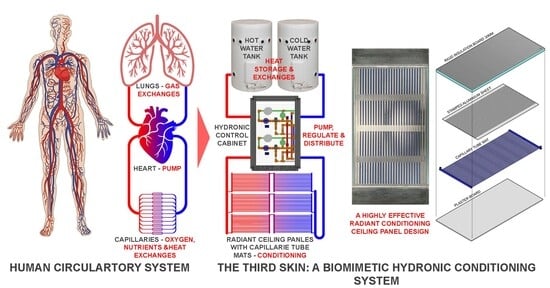
Graphical abstract
Open AccessPerspective
A Perspective on Bio-Inspired Approaches as Sustainable Proxy Towards an Accelerated Net Zero Emission Energy Transition
by
Miguel Chen Austin and Katherine Chung-Camargo
Biomimetics 2025, 10(12), 842; https://doi.org/10.3390/biomimetics10120842 - 16 Dec 2025
Abstract
The global energy transition faces a chasm between current policy commitments (IEA’s STEPS) and the deep, rapid transformation required to realize all national net zero pledges (IEA’s APC). This perspective addresses the critical innovation and policy gap blocking the APC pathway, where many
[...] Read more.
The global energy transition faces a chasm between current policy commitments (IEA’s STEPS) and the deep, rapid transformation required to realize all national net zero pledges (IEA’s APC). This perspective addresses the critical innovation and policy gap blocking the APC pathway, where many high-impact, clean technologies remain at low-to-medium Technology Readiness Levels (TRLs 3–6) and lack formal policy support. The insufficient nature of current climate policy nomenclature is highlighted, which often limits Nature-based Solutions (NbS) to incremental projects rather than driving systemic technological change (Bio-inspiration). Then, we propose that a deliberate shift from simple biomimetics (mimicking form) to biomimicry (emulating life cycle sustainability) is the essential proxy for acceleration. Biomimicry inherently targets the grand challenges of resilience, resource efficiency, and multi-functionality that carbon-centric metrics fail to capture. To institutionalize this change, we advocate for the mandatory integration of bio-inspired design into National Determined Contributions (NDCs) by reframing NbS as Nature-based Innovation (NbI) and introducing novel quantitative metrics. Finally, a three-step roadmap to guide this systemic shift is presented, from deployment of prototypes (2025–2028), to scaling evidence and standardization (2029–2035), to consolidation and regenerative integration (2036–2050). Formalizing these principles through policy will de-risk investment, mandate greater R&D rigor, and ensure that the next generation of energy infrastructure is not just carbon-neutral, but truly regenerative, aligning technology deployment with the necessary speed and depth of the APC scenario.
Full article
(This article belongs to the Section Energy Biomimetics)
►▼
Show Figures

Figure 1
Open AccessArticle
Bioinspired Simultaneous Learning and Motion–Force Hybrid Control for Robotic Manipulators Under Multiple Constraints
by
Yuchuang Tong, Haotian Liu and Zhengtao Zhang
Biomimetics 2025, 10(12), 841; https://doi.org/10.3390/biomimetics10120841 - 15 Dec 2025
Abstract
Inspired by the adaptive flexible motion coordination of biological systems, this study presents a bioinspired control strategy that enables robotic manipulators to achieve precise and compliant motion–force coordination for embodied intelligence and dexterous interaction in physically constrained environments. To this end, a learning-based
[...] Read more.
Inspired by the adaptive flexible motion coordination of biological systems, this study presents a bioinspired control strategy that enables robotic manipulators to achieve precise and compliant motion–force coordination for embodied intelligence and dexterous interaction in physically constrained environments. To this end, a learning-based motion–force hybrid control (LMFC) framework is proposed, which unifies learning and kinematic-level control to regulate both motion and interaction forces under incomplete or implicit kinematic information, thereby enhancing robustness and precision. The LMFC formulation recasts motion–force coordination as a time-varying quadratic programming (TVQP) problem, seamlessly incorporating multiple practical constraints—including joint limits, end-effector orientation maintenance, and obstacle avoidance—at the acceleration level, while determining control decisions at the velocity level. An RNN-based controller is further designed to integrate adaptive learning and control, enabling online estimation of uncertain kinematic parameters and mitigating joint drift. Simulation and experimental results demonstrate the effectiveness and practicality of the proposed framework, highlighting its potential for adaptive and compliant robotic control in constraint-rich environments.
Full article
Open AccessArticle
Transferring Structural Design Principles from Bamboo to Coreless Filament-Wound Lightweight Composite Trusses
by
Pascal Mindermann and Martha Elisabeth Grupp
Biomimetics 2025, 10(12), 840; https://doi.org/10.3390/biomimetics10120840 - 15 Dec 2025
Abstract
Bamboo has evolved a highly optimized structural system in its culms, which this study transfers into lightweight fiber composite trusses fabricated by coreless filament winding. Focusing on the structural segmentation involving diaphragms of the biological role model, this design principle was integrated into
[...] Read more.
Bamboo has evolved a highly optimized structural system in its culms, which this study transfers into lightweight fiber composite trusses fabricated by coreless filament winding. Focusing on the structural segmentation involving diaphragms of the biological role model, this design principle was integrated into the additive manufacturing process using a multi-stage winding, a tiling approach, and a water-soluble winding fixture. Through a FE-assisted analytical abstraction procedure, the transition to a carbon fiber material system was considered by determining a geometrical configuration optimized for structural mass, bending deflection, and radial buckling. Samples were fabricated from CFRP and experimentally tested in four-point bending. In mass-specific terms, integrating diaphragms into wound fiber composite samples improved failure load by 36%, ultimate load by 62%, and energy absorption by a factor of 7, at a reduction of only 14% in stiffness. Benchmarking against steel and PVC demonstrated superior mass-specific performance, although mōsō bamboo still outperformed all technical solutions, except in energy absorption.
Full article
(This article belongs to the Special Issue Advances in Bio-Inspired Design and Characterization of 3D-Printed Multimaterial Composites and Heterogeneous Structures)
►▼
Show Figures

Graphical abstract
Open AccessArticle
MECOA: A Multi-Strategy Enhanced Coati Optimization Algorithm for Global Optimization and Photovoltaic Models Parameter Estimation
by
Hang Chen and Maomao Luo
Biomimetics 2025, 10(12), 839; https://doi.org/10.3390/biomimetics10120839 - 15 Dec 2025
Abstract
To address the limitations of the traditional Coati Optimization Algorithm (COA), such as insufficient global exploration, poor population cooperation, and low convergence efficiency in global optimization and photovoltaic (PV) model parameter identification, this paper proposes a Multi-strategy Enhanced Coati Optimization Algorithm (MECOA). MECOA
[...] Read more.
To address the limitations of the traditional Coati Optimization Algorithm (COA), such as insufficient global exploration, poor population cooperation, and low convergence efficiency in global optimization and photovoltaic (PV) model parameter identification, this paper proposes a Multi-strategy Enhanced Coati Optimization Algorithm (MECOA). MECOA improves performance through three core strategies: (1) Elite-guided search, which replaces the single global best solution with an elite pool of three top individuals and incorporates the heavy-tailed property of Lévy flights to balance large-step exploration and small-step exploitation; (2) Horizontal crossover, which simulates biological gene recombination to promote information sharing among individuals and enhance cooperative search efficiency; and (3) Precise elimination, which discards 20% of low-fitness individuals in each generation and generates new individuals around the best solution to improve population quality. Experiments on the CEC2017 (30/50/100-dimensional) and CEC2022 (20-dimensional) benchmark suites demonstrate that MECOA achieves superior performance. On CEC2017, MECOA ranks first with an average rank of 1.87, 2.07, 1.83, outperforming the second-best LSHADE (2.03, 2.43 and 2.63) and the original COA (9.93, 9.93 and 9.96). On CEC2022, MECOA also maintains the leading position with an average rank of 1.58, far surpassing COA (8.92). Statistical analysis using the Wilcoxon rank-sum test (significance level 0.05) confirms the superiority of MECOA. Furthermore, MECOA is applied to parameter identification of single-diode (SDM) and double-diode (DDM) PV models. Experiments based on real measurement data show that the SDM model achieves an RMSE of 9.8610 × 10−4, which is only 1/20 of that of COA. For the DDM model, the fitted curves almost perfectly overlap with the experimental data, with a total integrated absolute error (IAE) of only 0.021555 A. These results fully validate the effectiveness and reliability of MECOA in solving complex engineering optimization problems, providing a robust and efficient solution for accurate modeling and optimization of PV systems.
Full article
(This article belongs to the Special Issue Bioinspired Computational Intelligence and Optimization in Engineering Systems)
►▼
Show Figures

Figure 1
Open AccessArticle
DNS and Experimental Assessment of Shark-Denticle-Inspired Anisotropic Porous Substrates for Drag Reduction
by
Benjamin Kellum Cooper, Sasindu Pinto, Henry Hong, Yang Zhang, Louis Cattafesta and Wen Wu
Biomimetics 2025, 10(12), 838; https://doi.org/10.3390/biomimetics10120838 - 15 Dec 2025
Abstract
Passive flow control methods are widely used to reduce drag in wall-bounded flows. A recent numerical study on separating turbulent flows over a bump covered with shark denticles revealed the formation of a reverse pore flow (RPF) beneath the denticle crowns under an
[...] Read more.
Passive flow control methods are widely used to reduce drag in wall-bounded flows. A recent numerical study on separating turbulent flows over a bump covered with shark denticles revealed the formation of a reverse pore flow (RPF) beneath the denticle crowns under an adverse pressure gradient (APG). This RPF generates an upstream thrust, leading to drag reduction. Motivated by these findings, the present study investigates a bio-inspired Anisotropic Permeable Propulsive Substrate (APPS) that incorporates key geometric features of the shark denticles, enabling thrust generation by the RPF. The designed APPS is evaluated through both direct numerical simulations of turbulent channel flows at
(This article belongs to the Special Issue Bioinspired Aerodynamic-Fluidic Design)
►▼
Show Figures

Graphical abstract
Open AccessArticle
NDFNGO: Enhanced Northern Goshawk Optimization Algorithm for Image Segmentation
by
Xiajie Zhao, Zuowen Bao, Yu Shao and Na Liang
Biomimetics 2025, 10(12), 837; https://doi.org/10.3390/biomimetics10120837 - 15 Dec 2025
Abstract
The gradual deterioration of fresco pictorial information presents a formidable obstacle for conservators dedicated to protecting humanity’s shared cultural legacy. Currently, scholars in the field of mural conservation predominantly focus on image segmentation techniques as a vital tool for facilitating mural restoration and
[...] Read more.
The gradual deterioration of fresco pictorial information presents a formidable obstacle for conservators dedicated to protecting humanity’s shared cultural legacy. Currently, scholars in the field of mural conservation predominantly focus on image segmentation techniques as a vital tool for facilitating mural restoration and protection. However, the existing image segmentation methods frequently fall short of delivering optimal segmentation results. To address this issue, this study introduces a novel mural image segmentation approach termed NDFNGO, which integrates a nonlinear differential learning strategy, a decay factor, and a Fractional-order adaptive learning strategy into the Northern Goshawk Optimization (NGO) algorithm to enhance segmentation performance. Firstly, the nonlinear differential learning strategy is incorporated to harness the diversity and adaptability of differential tactics, thereby augmenting the algorithm’s global exploration capabilities and effectively improving its ability to pinpoint optimal segmentation threshold regions. Secondly, drawing on the properties of nonlinear functions, a decay factor is proposed to achieve a more harmonious balance between the exploration and exploitation phases. Finally, by integrating historical individual data, the Fractional-order adaptive learning strategy is employed to reinforce the algorithm’s exploitation capabilities, thereby further refining the quality of image segmentation. Subsequently, the proposed method was evaluated through tests on twelve mural image segmentation tasks. The results indicate that the NDFNGO algorithm achieves victory rates of 95.85%, 97.9%, 97.9%, and 95.8% in terms of the fitness function metric, PSNR metric, SSIM metric, and FSIM metric, respectively. These findings demonstrate the algorithm’s high performance in mural image segmentation, as it retains a significant amount of original image information, thereby underscoring the superiority of the technology proposed in this study for addressing this challenge.
Full article
(This article belongs to the Special Issue Bio-Inspired Optimization Algorithms and Designs for Engineering Applications: 3rd Edition)
►▼
Show Figures

Figure 1
Open AccessArticle
Multidimensional Optimal Power Flow with Voltage Profile Enhancement in Electrical Systems via Honey Badger Algorithm
by
Sultan Hassan Hakmi, Hashim Alnami, Badr M. Al Faiya and Ghareeb Moustafa
Biomimetics 2025, 10(12), 836; https://doi.org/10.3390/biomimetics10120836 - 14 Dec 2025
Abstract
This study introduces an innovative Honey Badger Optimization (HBO) designed to address the Optimal Power Flow (OPF) challenge in electrical power systems. HBO is a unique population-based searching method inspired by the resourceful foraging behavior of honey badgers when hunting for food. In
[...] Read more.
This study introduces an innovative Honey Badger Optimization (HBO) designed to address the Optimal Power Flow (OPF) challenge in electrical power systems. HBO is a unique population-based searching method inspired by the resourceful foraging behavior of honey badgers when hunting for food. In this algorithm, the dynamic search process of honey badgers, characterized by digging and honey-seeking tactics, is divided into two distinct stages, exploration and exploitation. The OPF problem is formulated with objectives including fuel cost minimization and voltage deviation reduction, alongside operational constraints such as generator limits, transformer settings, and line power flows. HBO is applied to the IEEE 30-bus test system, outperforming existing methods such as Particle Swarm Optimization (PSO) and Gray Wolf Optimization (GWO) in both fuel cost reduction and voltage profile enhancement. Results indicate significant improvements in system performance, achieving 38.5% and 22.78% better voltage deviations compared to GWO and PSO, respectively. This demonstrates HBO’s efficacy as a robust optimization tool for modern power systems. In addition to the single-objective studies, a multi-objective OPF formulation was investigated to produce the complete Pareto front between fuel cost and voltage deviation objectives. The proposed HBO successfully generated a well-distributed set of trade-off solutions, revealing a clear conflict between economic efficiency and voltage quality. The Pareto analysis demonstrated HBO’s strong capability to balance these competing objectives, identify knee-point operating conditions, and provide flexible decision-making options for system operators.
Full article
(This article belongs to the Section Biological Optimisation and Management)
►▼
Show Figures
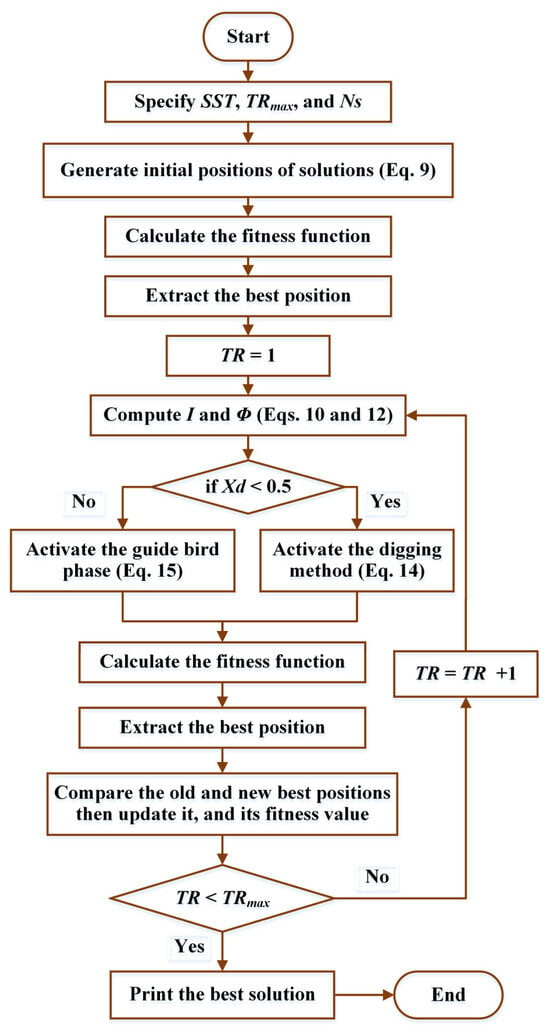
Figure 1
Open AccessArticle
Predicting and Synchronising Co-Speech Gestures for Enhancing Human–Robot Interactions Using Deep Learning Models
by
Enrique Fernández-Rodicio, Christian Dondrup, Javier Sevilla-Salcedo, Álvaro Castro-González and Miguel A. Salichs
Biomimetics 2025, 10(12), 835; https://doi.org/10.3390/biomimetics10120835 - 13 Dec 2025
Abstract
In recent years, robots have started to be used in tasks involving human interaction. For this to be possible, humans must perceive robots as suitable interaction partners. This can be achieved by giving the robots an animate appearance. One of the methods that
[...] Read more.
In recent years, robots have started to be used in tasks involving human interaction. For this to be possible, humans must perceive robots as suitable interaction partners. This can be achieved by giving the robots an animate appearance. One of the methods that can be utilised to endow a robot with a lively appearance is giving it the ability to perform expressions on its own, that is, combining multimodal actions to convey information. However, this can become a challenge if the robot has to use gestures and speech simultaneously, as the non-verbal actions need to support the message communicated by the verbal component. In this manuscript, we present a system that, based on a robot’s utterances, predicts the corresponding gesture and synchronises it with the speech. A deep learning-based prediction model labels the robot’s speech with the types of expressions that should accompany it. Then, a rule-based synchronisation module connects different gestures to the correct parts of the speech. For this, we have tested two different approaches: (i) using a combination of recurrent neural networks and conditional random fields; and (ii) using transformer models. The results show that the proposed system can properly select co-speech gestures under the time constraints imposed by real-world interactions.
Full article
(This article belongs to the Special Issue Intelligent Human–Robot Interaction: 4th Edition)
►▼
Show Figures

Figure 1
Open AccessArticle
Fine-Grained Image Recognition with Bio-Inspired Gradient-Aware Attention
by
Bing Ma, Junyi Li, Zhengbei Jin, Wei Zhang, Xiaohui Song and Beibei Jin
Biomimetics 2025, 10(12), 834; https://doi.org/10.3390/biomimetics10120834 - 12 Dec 2025
Abstract
Fine-grained image recognition is one of the key tasks in the field of computer vision. However, due to subtle inter-class differences and significant intra-class differences, it still faces severe challenges. Conventional approaches often struggle with background interference and feature degradation. To address these
[...] Read more.
Fine-grained image recognition is one of the key tasks in the field of computer vision. However, due to subtle inter-class differences and significant intra-class differences, it still faces severe challenges. Conventional approaches often struggle with background interference and feature degradation. To address these issues, we draw inspiration from the human visual system, which adeptly focuses on discriminative regions, to propose a bio-inspired gradient-aware attention mechanism. Our method explicitly models gradient information to guide the attention, mimicking biological edge sensitivity, thereby enhancing the discrimination between global structures and local details. Experiments on the CUB-200-2011, iNaturalist2018, nabbirds and Stanford Cars datasets demonstrated the superiority of our method, achieving Top-1 accuracy rates of 92.9%, 90.5%, 93.1% and 95.1%, respectively.
Full article
(This article belongs to the Special Issue Biologically Inspired Vision and Image Processing 2025)
►▼
Show Figures
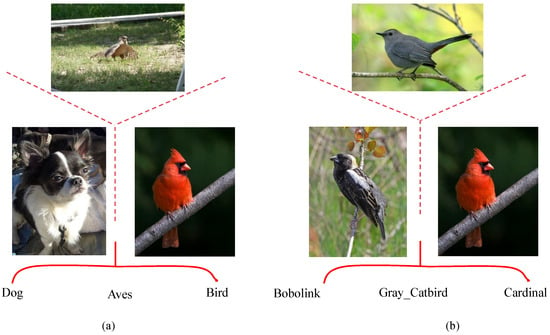
Figure 1
Open AccessArticle
Use of Amalgam and Composite Restorations Among 12-Year-Old Children in Israel: A Retrospective Study
by
Rimah Nassar, Tali Chackartchi, Haim Doron, Jonathan Mann, Mordechai Findler and Guy Tobias
Biomimetics 2025, 10(12), 833; https://doi.org/10.3390/biomimetics10120833 - 12 Dec 2025
Abstract
Background: This study examined the trends in restorative dental practice among 12-year-old children treated at a nationwide public health maintenance organization in Israel between 2016 and 2022, focusing on the use of amalgam versus composite resin restorations in permanent premolars and molars. Methods:
[...] Read more.
Background: This study examined the trends in restorative dental practice among 12-year-old children treated at a nationwide public health maintenance organization in Israel between 2016 and 2022, focusing on the use of amalgam versus composite resin restorations in permanent premolars and molars. Methods: Data were extracted from electronic health records of the second-largest public health organization in Israel, identifying children who underwent restorative treatments during the study period. Restoration rates were compared overall and stratified by gender, socioeconomic status, and number of surfaces restored. Statistical analysis was conducted using SPSS version 27, employing Levene’s test for equality of variances and Welch’s one-way ANOVA. Results: The results showed a statistically significant decline in amalgam use (p < 0.05) alongside a marked increase in composite resin restorations (p < 0.05), consistent across genders and socioeconomic groups. Notably, composite resins were increasingly selected for complex, multi-surface restorations (p < 0.05). Conclusions: These findings highlight a substantial shift in paediatric restorative practice in Israel, reflecting growing preference for composite resins likely influenced by patient demands and national dental reforms that eliminated financial barriers. The observed trend underscores the importance of continued monitoring of material selection to guide evidence-based practice in pediatric dentistry.
Full article
(This article belongs to the Special Issue Biomimetic Strategies to Enhance Bone Tissue Healing, Remodeling and Regeneration: 2nd Edition)
►▼
Show Figures

Graphical abstract
Open AccessArticle
Robust Motor Imagery–Brain–Computer Interface Classification in Signal Degradation: A Multi-Window Ensemble Approach
by
Dong-Geun Lee and Seung-Bo Lee
Biomimetics 2025, 10(12), 832; https://doi.org/10.3390/biomimetics10120832 - 12 Dec 2025
Abstract
Electroencephalography (EEG)-based brain–computer interface (BCI) mimics the brain’s intrinsic information-processing mechanisms by translating neural oscillations into actionable commands. In motor imagery (MI) BCI, imagined movements evoke characteristic patterns over the sensorimotor cortex, forming a biomimetic channel through which internal motor intentions are decoded.
[...] Read more.
Electroencephalography (EEG)-based brain–computer interface (BCI) mimics the brain’s intrinsic information-processing mechanisms by translating neural oscillations into actionable commands. In motor imagery (MI) BCI, imagined movements evoke characteristic patterns over the sensorimotor cortex, forming a biomimetic channel through which internal motor intentions are decoded. However, this biomimetic interaction is highly vulnerable to signal degradation, particularly in mobile or low-resource environments where low sampling frequencies obscure these MI-related oscillations. To address this limitation, we propose a robust MI classification framework that integrates spatial, spectral, and temporal dynamics through a filter bank common spatial pattern with time segmentation (FBCSP-TS). This framework classifies motor imagery tasks into four classes (left hand, right hand, foot, and tongue), segments EEG signals into overlapping time domains, and extracts frequency-specific spatial features across multiple subbands. Segment-level predictions are combined via soft voting, reflecting the brain’s distributed integration of information and enhancing resilience to transient noise and localized artifacts. Experiments performed on BCI Competition IV datasets 2a (250 Hz) and 1 (100 Hz) demonstrate that FBCSP-TS outperforms CSP and FBCSP. A paired t-test confirms that accuracy at 110 Hz is not significantly different from that at 250 Hz (p < 0.05), supporting the robustness of the proposed framework. Optimal temporal parameters (window length = 3.5 s, moving length = 0.5 s) further stabilize transient-signal capture and improve SNR. External validation yielded a mean accuracy of 0.809 ± 0.092 and Cohen’s kappa of 0.619 ± 0.184, confirming strong generalizability. By preserving MI-relevant neural patterns under degraded conditions, this framework advances practical, biomimetic BCI suitable for wearable and real-world deployment.
Full article
(This article belongs to the Special Issue Advances in Brain–Computer Interfaces (BCI): Challenges and Opportunities)
►▼
Show Figures
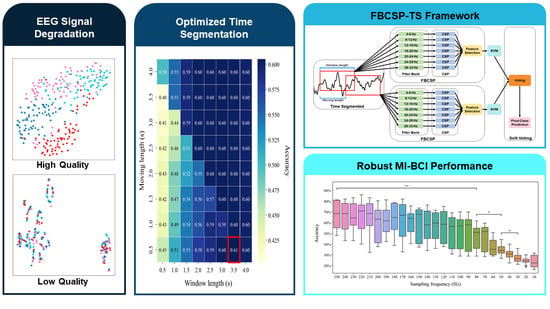
Graphical abstract
Open AccessArticle
Propulsive Force Characterization of a Bio-Robotic Sea Lion Foreflipper: A Kinematic Basis for Agile Propulsion
by
Anthony Drago, Nicholas Marcouiller, Shraman Kadapa, Frank E. Fish and James L. Tangorra
Biomimetics 2025, 10(12), 831; https://doi.org/10.3390/biomimetics10120831 - 12 Dec 2025
Abstract
Unmanned underwater vehicles (UUVs) capable of agile, high-speed maneuvering in complex environments require propulsion systems that can dynamically modulate three-dimensional forces. The California sea lion (Zalophus californianus) provides an exceptional biological model, using its foreflippers to achieve rapid turns and powerful
[...] Read more.
Unmanned underwater vehicles (UUVs) capable of agile, high-speed maneuvering in complex environments require propulsion systems that can dynamically modulate three-dimensional forces. The California sea lion (Zalophus californianus) provides an exceptional biological model, using its foreflippers to achieve rapid turns and powerful propulsion. However, the specific kinematic mechanisms that govern instantaneous force generation from its powerful foreflippers remain poorly quantified. This study experimentally characterizes the time-varying thrust and lift produced by a bio-robotic sea lion foreflipper to determine how flipper twist, sweep, and phase overlap modulate propulsive forces. A three-degree-of-freedom bio-robotic flipper with a simplified, low-aspect-ratio planform and single compliant hinge was tested in a circulating flow tank, executing parameterized power and paddle strokes in both isolated and combined-phase trials. The time-resolved force data reveal that the propulsive stroke functions as a tunable hybrid system. The power phase acts as a force-vectoring mechanism, where the flipper’s twist angle reorients the resultant vector: thrust is maximized in a broad, robust range peaking near 45°, while lift increases monotonically to 90°. The paddle phase operates as a flow-insensitive, geometrically driven thruster, where twist angle (0° optimal) regulates thrust by altering the presented surface area. In the full stroke, a temporal-phase overlap governs thrust augmentation, while the power-phase twist provides robust steering control. Within the tested inertial flow regime (Re ≈ 104–105), this control map is highly consistent with propulsion dominated by geometric momentum redirection and impulse timing, rather than circulation-based lift. These findings establish a practical, experimentally derived control map linking kinematic inputs to propulsive force vectors, providing a foundation for the design and control of agile, bio-inspired underwater vehicles.
Full article
(This article belongs to the Special Issue Bio-Inspired Underwater Propulsion: Actuation, Sensing, Processing and Control)
►▼
Show Figures
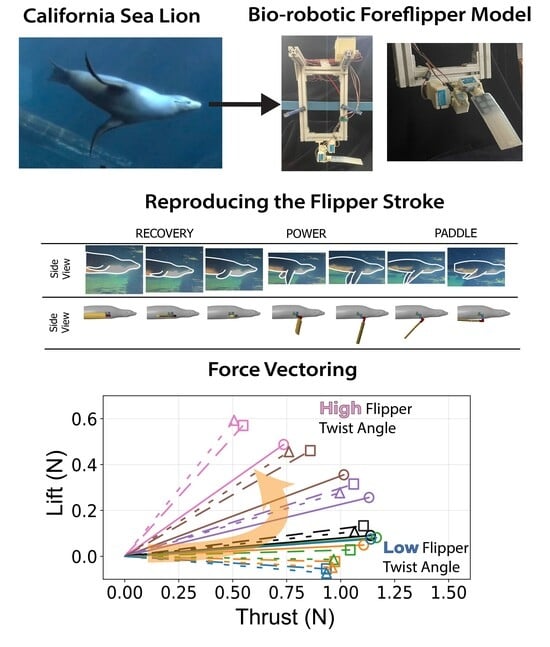
Graphical abstract
Open AccessArticle
Animal Species Classification from Vocalizations Using Cochlear-Inspired Audio Features and Machine Learning
by
Karim Youssef, Julien Moussa H. Barakat, Ghina El Mir, Sherif Said, Samer Al Kork and Alaa Eleyan
Biomimetics 2025, 10(12), 830; https://doi.org/10.3390/biomimetics10120830 - 11 Dec 2025
Abstract
Biomimetic approaches have gained increasing attention in the development of efficient computational models for sound scene analysis. In this paper, we present a sound-based animal species classification method inspired by the auditory processing mechanisms of the human cochlea. The approach employs gammatone filtering
[...] Read more.
Biomimetic approaches have gained increasing attention in the development of efficient computational models for sound scene analysis. In this paper, we present a sound-based animal species classification method inspired by the auditory processing mechanisms of the human cochlea. The approach employs gammatone filtering to extract features that capture the distinctive characteristics of animal vocalizations. While gammatone filterbanks themselves are well established in auditory signal processing, their systematic application and evaluation for animal vocalization classification represent the main contribution of this work. Four gammatone-based feature representations are explored and used to train and test an artificial neural network for species classification. The method is evaluated on a dataset comprising vocalizations from 13 animal species with 50 vocalizations per specie and 2.76 seconds per vocalization in average. The evaluations are conducted to study the system parameters in different conditions and system architectures. Although the dataset is limited in scale compared to larger public databases, the results highlight the potential of combining biomimetic cochlear filtering with machine learning to perform reliable and robust species classification through sound.
Full article
(This article belongs to the Special Issue Biomimicry for Optimization, Control, and Automation: 3rd Edition)
►▼
Show Figures
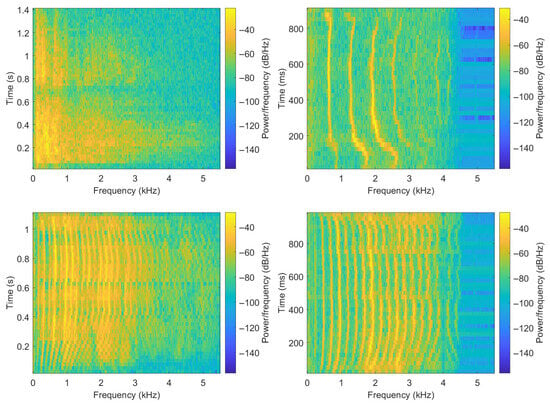
Figure 1
Open AccessArticle
Nanomechanical and Optical Properties of Anti-Counterfeiting Nanostructures Obtained by Hydrogel Photoresist in Laser Processing
by
Wei Wu, Qingxue Deng, Yuhang Shi and Jiyu Sun
Biomimetics 2025, 10(12), 829; https://doi.org/10.3390/biomimetics10120829 - 11 Dec 2025
Abstract
The microstructures of living creatures are widely used in bionics, and some can generate structural colors on biological surfaces and enable the process of dynamic camouflage. This study presents the hydrogel photoresist synthesized by polymerizing HEMA and MMA in THF solvent with initiator
[...] Read more.
The microstructures of living creatures are widely used in bionics, and some can generate structural colors on biological surfaces and enable the process of dynamic camouflage. This study presents the hydrogel photoresist synthesized by polymerizing HEMA and MMA in THF solvent with initiator AIBN. Then, nanostructured gratings were fabricated on the hydrogel photoresists via double-beam interference lithography, and were characterized by scanning electron microscopy, angle-resolved spectroscopy system, and nanoindentation for pattern characterization, and nanomechanical and optical performance, respectively. Under multi-angle incident light, the optical computation of gratings with different depths indicates that a shallow implicit grating does not affect its dynamic color-changing performance. It is established that the laser power of 500 mW, a first exposure time of 5 s, and a second exposure time of 3 s are feasible for achieving efficient anti-counterfeiting nanostructures. The L500-5-3 has greater Er and H than that of L500-5 with the second processing, but smaller than ineffective patterns. And the depth of anti-counterfeiting gratings that is less than 0.8 μm is conducive to obtaining anti-counterfeiting gratings with different size parameters. The acquired anti-counterfeiting nanostructures exhibit excellent stability, reliability, and angle-dependent color changes under room light, which provides promising applications for security materials in daily life, sensors, optics, and electronics.
Full article
(This article belongs to the Special Issue Bionic Engineering Materials and Structural Design)
►▼
Show Figures
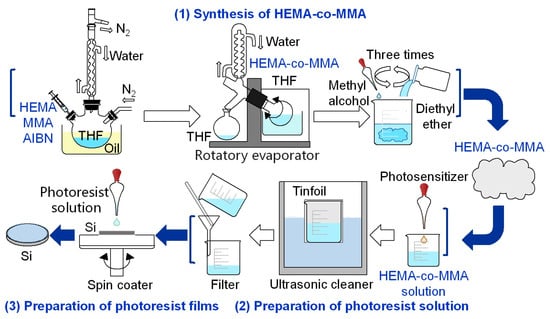
Figure 1
Open AccessArticle
Performance of Hammerstein Spline Adaptive Filtering Based on Fair Cost Function for Denoising Electrocardiogram Signals
by
Suchada Sitjongsataporn and Theerayod Wiangtong
Biomimetics 2025, 10(12), 828; https://doi.org/10.3390/biomimetics10120828 - 10 Dec 2025
Abstract
This paper proposes a simplified adaptive filtering approach using a Hammerstein function and the spline interpolation based on a Fair cost function for denoising electrocardiogram (ECG) signals. The use of linear filters in real-world applications has many limitations. Adaptive nonlinear filtering is a
[...] Read more.
This paper proposes a simplified adaptive filtering approach using a Hammerstein function and the spline interpolation based on a Fair cost function for denoising electrocardiogram (ECG) signals. The use of linear filters in real-world applications has many limitations. Adaptive nonlinear filtering is a key development in tackling the challenge of discovering the specific characteristics of biomimetic systems for each person in order to eliminate unwanted signals. A biomimetic system refers to a system that mimics certain biological processes or characteristics of the human body, in this case, the individual features of a person’s cardiac signals (ECG). Here, the adaptive nonlinear filter is designed to cope with ECG variations and remove unwanted noise more effectively. The objective of this paper is to explore an individual biomedical filter based on adaptive nonlinear filtering for denoising the corrupted ECG signal. The Hammerstein spline adaptive filter (HSAF) architecture consists of two structural blocks: a nonlinear block connected to a linear one. In order to make a smooth convergence, the Fair cost function is introduced for convergence enhancement. The affine projection algorithm (APA) based on the Fair cost function is used to denoise the contaminated ECG signals, and also provides fast convergence. The MIT-BIH 12-lead database is used as the source of ECG biomedical signals contaminated by random noises modelled by Cauchy distribution. Experimental results show that the estimation error of the proposed HSAF–APA–Fair algorithm, based on the Fair cost function, can be reduced when compared with the conventional least mean square-based algorithm for denoising ECG signals.
Full article
(This article belongs to the Special Issue New Biomimetic Advances in Signal and Image Processing for Biomedical Applications 2025)
►▼
Show Figures
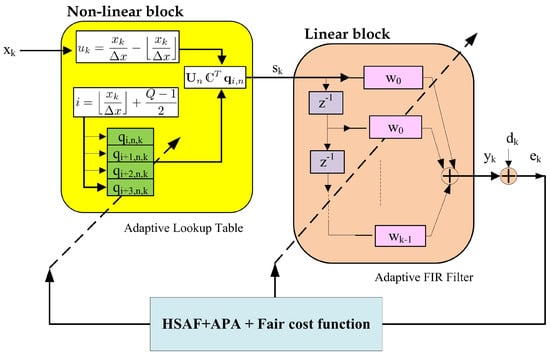
Figure 1
Open AccessArticle
Hybrid ANFIS–MPA and FFNN–MPA Models for Bitcoin Price Forecasting
by
Ceren Baştemur Kaya, Ebubekir Kaya and Eyüp Sıramkaya
Biomimetics 2025, 10(12), 827; https://doi.org/10.3390/biomimetics10120827 - 10 Dec 2025
Abstract
This study introduces two hybrid forecasting models that integrate the Marine Predators Algorithm (MPA) with Adaptive Neuro-Fuzzy Inference Systems (ANFIS) and Feed-Forward Neural Networks (FFNN) for short-term Bitcoin price prediction. Daily Bitcoin data from 2022 were converted into supervised time-series structures with multiple
[...] Read more.
This study introduces two hybrid forecasting models that integrate the Marine Predators Algorithm (MPA) with Adaptive Neuro-Fuzzy Inference Systems (ANFIS) and Feed-Forward Neural Networks (FFNN) for short-term Bitcoin price prediction. Daily Bitcoin data from 2022 were converted into supervised time-series structures with multiple input configurations. The proposed hybrid models were evaluated against six well-known metaheuristic algorithms commonly used for training intelligent forecasting systems. The results show that MPA consistently yields lower prediction errors, faster convergence, and more stable optimization behavior compared with alternative algorithms. Both ANFIS-MPA and FFNN-MPA maintained their advantage across all tested structures, demonstrating reliable performance under varying model complexities. All experiments were repeated multiple times, and the hybrid approaches exhibited low variance, indicating robust and reproducible behavior. Overall, the findings highlight the effectiveness of MPA as an optimizer for improving the predictive performance of neuro-fuzzy and neural network models in financial time-series forecasting.
Full article
(This article belongs to the Special Issue Advances in Swarm Intelligence Optimization Algorithms and Applications: 2nd Edition)
►▼
Show Figures

Figure 1
Highly Accessed Articles
Latest Books
E-Mail Alert
News
Topics
Topic in
ASI, Bioengineering, C, Healthcare, Biomimetics, Processes
Biomedical Engineering, Healthcare and Sustainability, 2nd Edition
Topic Editors: Teen-Hang Meen, Chun-Yen Chang, Charles Tijus, Po-Lei Lee, Yi-Chun DuDeadline: 31 May 2026
Topic in
Biomimetics, Electronics, Gels, Robotics, Technologies
Bio-Inspired, Biomedical, Surgical, Social and AI-Integrated Bio-Mechanical Robotics
Topic Editors: Yanen Wang, Chenguang YangDeadline: 31 July 2026
Topic in
Molecules, Biomimetics, Chemosensors, Life, AI, Sci
Recent Advances in Chemical Artificial Intelligence
Topic Editors: Pier Luigi Gentili, Jerzy Górecki, David C Magri, Pasquale StanoDeadline: 15 October 2026
Topic in
Biophysica, Cells, IJMS, Materials, Micro, Biomimetics, Biomolecules
Biofabrication Technologies for Tissue Repair and Regeneration
Topic Editors: Lorenzo Vannozzi, Eugenio Redolfi RivaDeadline: 20 February 2027

Conferences
Special Issues
Special Issue in
Biomimetics
Bio-Inspired Propulsion and Fluid Mechanics
Guest Editors: Alexander Alexeev, Xue Guang MengDeadline: 20 December 2025
Special Issue in
Biomimetics
Exploration of Bio-Inspired Computing: 2nd Edition
Guest Editors: Changsheng Zhang, Haitong ZhaoDeadline: 20 December 2025
Special Issue in
Biomimetics
Compliant vs Kinematic Morphing Architectures: Complementary or Alternatives—2nd Edition
Guest Editors: Antonio Concilio, Cristian Vendittozzi, Rosario Pecora, Salvatore AmeduriDeadline: 20 December 2025
Special Issue in
Biomimetics
Biomimetics in Intelligent Sensor: 2nd Edition
Guest Editors: Qian Wang, Kejun WangDeadline: 20 December 2025











